Flavor that 'knocks you off your feet'
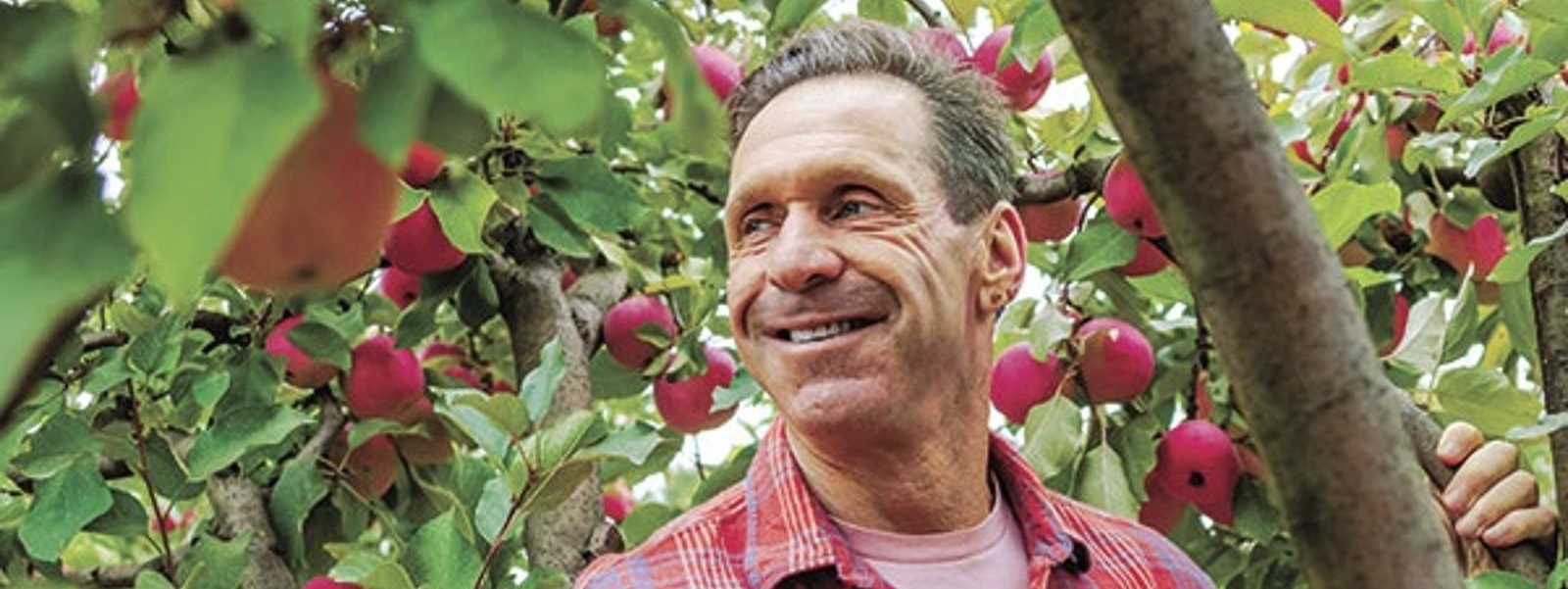
Summer 2025 California Bountiful magazine
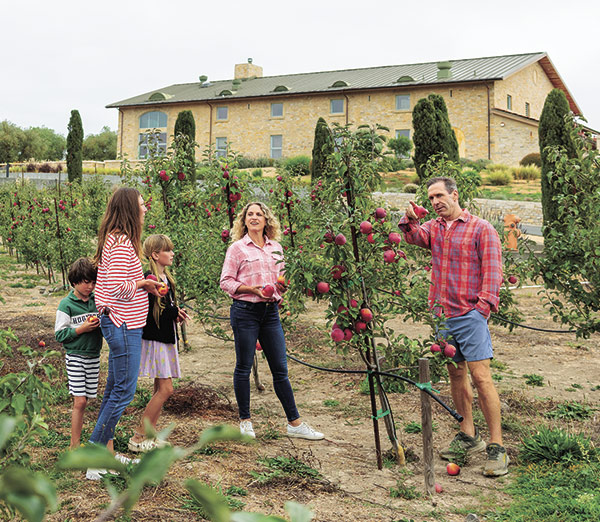
Heirlooms are the apple of this farmer’s eye
Story by Linda DuBois
Photos by Paige Green
Alison Luna recalls her pleasant surprise when she bit into an apple slice and was met with a burst of pineapple flavor.
“It was very unexpected,” Luna says. “There were so many different notes, all these floral and tropical flavors coming through.”
The Petaluma resident and her two children, Viva, 10, and Theo, 8, were participating in an heirloom apple tasting at Gold Ridge Organic Farms, an 88-acre orchard in Sonoma County’s Sebastopol that grows 70 heirloom apple varieties, among other crops.
“A lot of times I’ll just grab an apple because it’s healthy and crunchy,” Luna says. “But it was nice to give these apples the time to really taste them and experience the different textures.”
Luna and her family enjoy visiting various farms for U-picks and other events, but this experience was particularly eye-opening, she says.
She learned, among other things, that there are around 7,500 apple varieties in the world and most are heirlooms, that is, apples not grown commercially or that are not newly bred varieties. Some are centuries old, with stories behind them of pioneer families passing them down through the generations. Often, they have novel flavors, colors or textures but lack the right traits for the commercial market such as uniformity, size, shape, color or durability for packing and shipping.
“I was aware of the typical apples that you see in grocery stores, but I didn’t realize there were so many heirloom apples, that apples can have so many different flavors and that so many kinds of apples grow locally,” she says.
Visitor Carlyn Shaw, on vacation from Florida, noted how much she learned from a behind-the-scenes peek at the production process.
“One of the fun facts I learned is there is a team specifically dedicated to shining the apples,” she says, adding she enjoyed “the whole energy of the experience. Everyone was so helpful and passionate and excited to share their knowledge.”
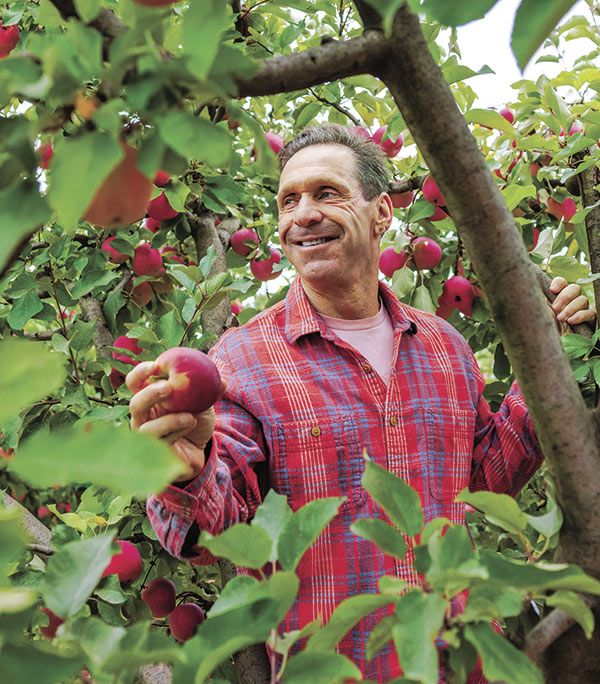
Spreading enthusiasm
Those passionate people are the farm’s owner, Brooke Hazen, and a few employees who help with farm labor, the farm store, making value-added products, marketing and events.
After growing up in Malibu and the Bay Area, Hazen studied sustainable agriculture, wildlife biology and natural resources. He worked on a farm during college and then started his own farm in 1995, before buying his current land, a former cattle ranch, in 2000.
“I started out growing organic vegetables and then got into orchards,” he says. “I’ve grown pretty much everything you can grow.”
Now, he focuses mainly on olives and apples, but he also grows a few citrus fruits and pears.
Fuji and Honeycrisp, his only two commercial varieties, make up 90% of the production on his 18 acres of apple trees. While only 10% are heirlooms, his 70 different varieties still make him one of the largest heirloom apple growers in the country.
“The heirlooms are what make me excited,” he said. “Ever since I’ve grown vegetables and fruits, I’ve always dabbled in the most interesting kind of varieties with lots of beautiful colors and flavors and textures.”
He chooses sweet varieties that are good for eating fresh, often called dessert apples or table apples.
To keep up with his “research,” he eats three to five apples a day. After all this sampling, he has a clear favorite: Pink Pearl.
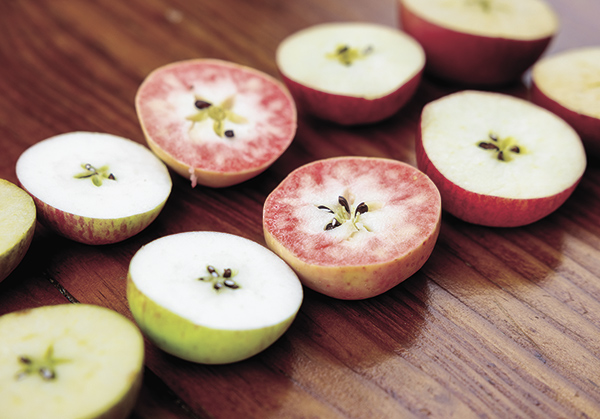
“It just shows the enormous potential of an apple as far as its range of color, flavor and texture,” Hazen says. “The outside is this lime-green skin with pink just permeating through it. Then, when you cut it open, you’re just shocked at the bright pink flesh, and then when you bite into it, the flavor just knocks you off your feet. It’s this interesting combination of tart and sweet.”
Also on the short list is Ashmead’s Kernel. “It’s one of the most complex apples I’ve ever eaten. It’s just this explosion of a wide range of flavors I can’t even describe. It’s overwhelming in a good way.”
Then there are the ones that mimic the flavors of other fruits, such as Strawberry Parfait or visitor Luna’s favorite, Pitmaston Pineapple. “They’ve done studies and found that some of the chemicals in them are shared with other fruits,” Hazen says.
He also has his own variety, Sea Breeze, a genetic variant that grew naturally on one branch of his Hoople’s Antique Gold tree. “It’s exceptional,” he says.
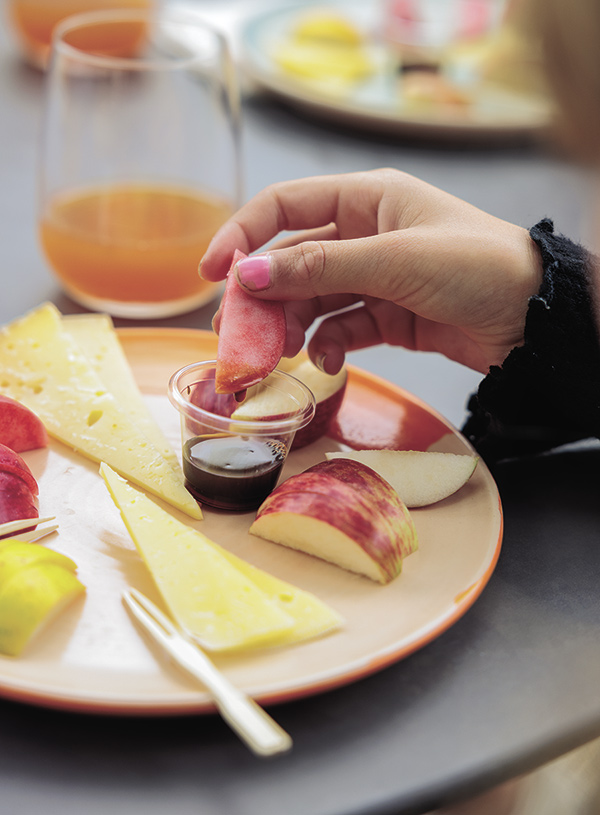
Preserving diversity
People are intrigued by the heirlooms, Hazen says. “A lot of those who love the heirloom apples are very savvy, the type of buyers who are purposely looking for some really great characteristics in apples,” he says.
But that’s not the only reason he’s passionate about growing them and has a desire to expand into even more varieties.
“Because heirlooms are not grown on a large scale, they are in danger of being lost. Some have already been lost, while others are still being discovered,” he says. “It’s important to preserve them for the genetic diversity that protects us from disease.”
He notes that common varieties, like Fuji or Honeycrisp, were bred with heirlooms, and he’s also trying some new crosses with those, mostly with Honeycrisp parentage for its texture.
He calls the mild climate of western Sonoma County “the perfect laboratory environment to coax out all these aromatic qualities, flavors, colors, textures, all these nuances.”
He buys all his heirloom starter trees from a local nursery and his common trees from larger nurseries.
Once the apples mature from late summer through fall, he and his employees harvest them by hand, careful to pick only those that are fully ripe, for the best flavor. “I’ve been clear with (the wholesale clients) that it has to immediately be on the store shelves,” Hazen says.

“We’ll end up doing multiple passes through the orchard, with different varieties, to capture peak ripeness because the trees all ripen at different stages.”
Hazen acknowledges heirloom apples can be challenging to grow for a profit, especially organically, due to susceptibility to pests and diseases and their lower fruit yields compared to common varieties—but he says the effort is worth it.
“They make the customers happy because they’re getting more than just a small range of selections. They’re able to see the beauty and wonder of nature and what it can produce.”
To help make ends meet, he’s moving more of his business from wholesale to direct-to-customer and will continue to add “value added” products such as apple sauce, cider, syrups, dried fruit, pies, vinegars and oils. Several are made in-house. His farm store sells the products and seasonal produce, and he plans to start offering fruit from other small organic farms. Customers can also order products online for shipping.
He’ll continue to hold tastings, tours, seminars, demonstrations, U-picks and various public events. Now, he’s gearing up for his biggest annual event, the Heirloom Apple Festival, set for Sept. 20.
“I started the Heirloom Apple Festival because I wanted to capture that small fleeting window of the heirloom apples at their peak time when the widest diversity is ripe, and so we could celebrate them,” he says. “It’s such a beautiful time of the year. It’s just so special and it goes so quickly.”
- Heirloom apple tart
-
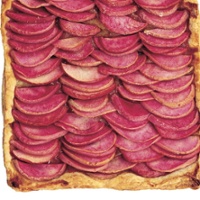
-
Stephanie Klassen created this French-style apple tart recipe for Gold Ridge Organic Farms. It looks particularly appealing when made with a mixture of pink and white fleshed apples. Look for firm, tart heirloom apples that will hold their shape during baking, such as Pink Pearl, Calville Blanc (used in French pastries since the 17th century), Cinnamon Spice or Esopus Spitzenburg.

